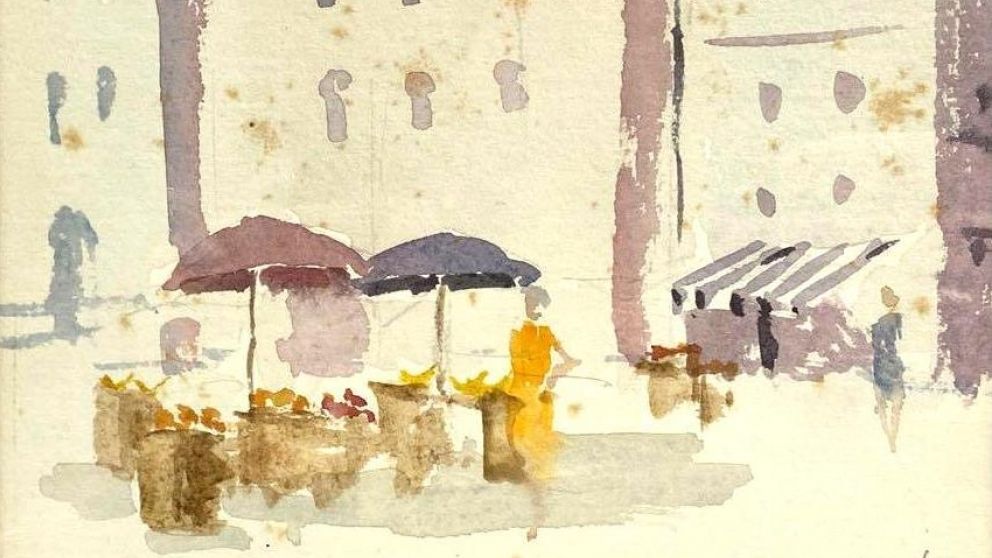
What is Watercolor?
Watercolor is a type of Fine Art painting in which the color pigments are part of a water-based solution. Mostly being gum arabic, as opposed to other substances that were used in the past, these particles can be mixed with additives such as glycerin, honey, or ox gall, in order to achieve different visual qualities. The way you apply the water and pigment determines the results. It is very important as a watercolorist that they use the best quality materials that they can afford. This will help to ensure the success of their paintings.
Watercolor Paper
It is essential that you use actual watercolor paper. Below is a comparison of a watercolor wash on regular copy paper, and another on watercolor paper with the same paint mix. The copy paper isn't made in the same way as watercolor paper and results in a buckled, wavy wash. The copy paper also pills, meaning the fibers start to tear and ball up on the sheet. The watercolor paper is a heavier weight and is made with additives called "sizing" that allow it to absorb moisture in the proper way. It remains flat, has an even color tone, and doesn't pill or tear.
Watercolor Brushes
Good quality brushes can be either natural hair or synthetic, but they need to be designated for watercolor, meaning they are designed to be flexible and hold water (oil and acrylic brushes are too stiff).
Wet on Dry Versus Wet on Wet Techniques
There are many techniques you can use while watercolor painting, but here are two basic techniques that will give you different results depending on what you're going for:
Wet on dry: applying wet paint onto dry paper, or wet paint onto an area of dry paint. This technique allows for more control and crisp, defined edges. The paint will only go where the brush takes it to allow more precision in crafting the art.
Wet on wet: wet paint is applied to wet paper, or added to a wash of fresh paint. This creates a fluid, fun, and unpredictable effect. There is less control with a wet-on-wet technique.
Watercolor properties
Watercolor paints have four basic properties – transparency, granulation, staining, and lightfastness. Understanding these properties helps you to know what effects and techniques you can use for different effects. You’ll find these properties listed for each color in our Color Stories or watercolor brochure.
Transparency is how much the whiteness of the paper can shine through, allowing the paint color to appear to glow. Watercolors can be transparent, semi-transparent, or opaque depending on the pigments used to make them. Transparent watercolors are also very beautiful when glazed over other dry colors.
Granulation is a special, almost magical property present in some watercolors. When granulating watercolors are painted out and the water disperses the pigments, the heavier pigments separate and settle differently, giving wonderfully unpredictable textural effects.
Staining or non-staining refers to whether or not the color will leave a stain on the paper when you try to remove it. This is accomplished by using a cloth or sponge to remove parts of a brushstroke.
Lightfastness is how long a color will resist fading over time in normal lighting conditions. It is rated on the following scale:
I = Excellent (100+ years)
II = Very Good (100 years)
III = Fair (50 – 70 years)
IV = Fugitive (15 – 20 years)
Where do I find quality watercolor paintings for a fair price?
Blue Box Auction Gallery is hosting a series of fine art auctions all throughout the Autumn season. The collection features a myriad of mediums from the travels around the globe of two naval officers.













